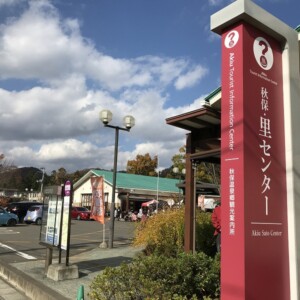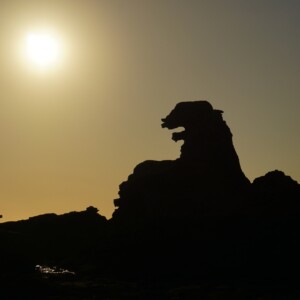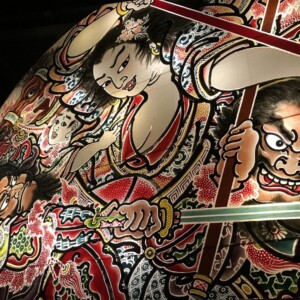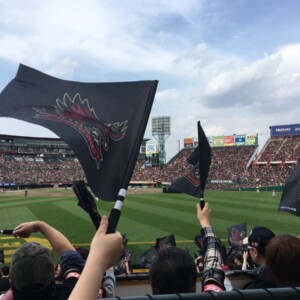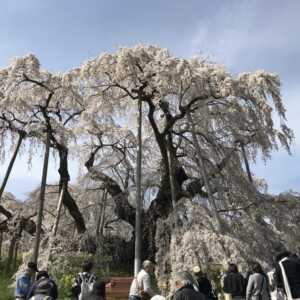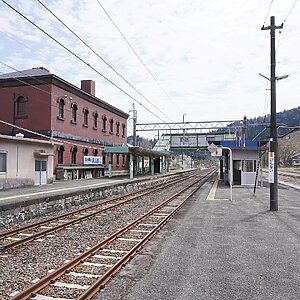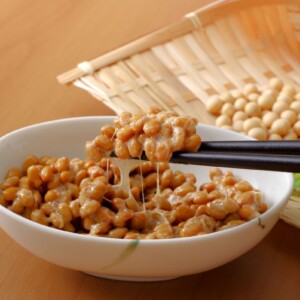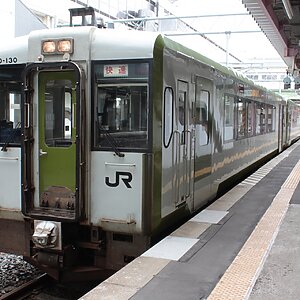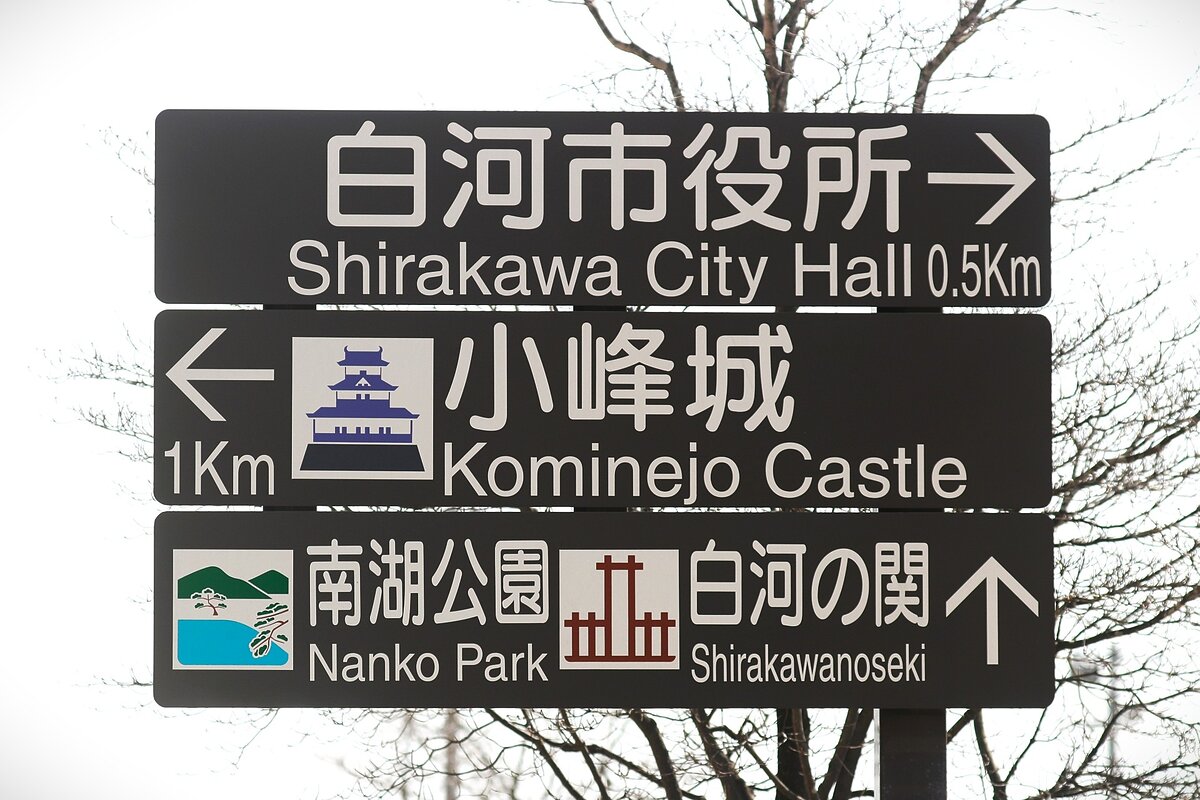
What is Shirakawa's Seki? Shirakawa, a border town where the checkpoint was once located [Fukushima Prefecture]
table of contents
- 1 Shirakawa Barrier: Its Role Ended During the Heian Period
- 2 During the Kamakura period, the Yuki clan took control of Shirakawa
- 3 Shirakawa Domain, where Matsudaira Sadanobu served as lord
- 4 The Shirakawa Barrier Site identified by Matsudaira Sadanobu
- 5 Shirakawa Castle, the residence of the Yuki clan, the first lord of Shirakawa
- 6 Komine Castle, the castle of the Shirakawa domain
- 7 Nanko, a park for the common people built by Matsudaira Sadanobu
Until around the Nara period, Shirakawa City in Fukushima Prefecture was located at the entrance to a region known as Emishi (present-day Tohoku region), where the power of the Imperial Court did not extend. A checkpoint (Shirakawa Barrier) was set up at the border, and entry and exit of people was strictly controlled.
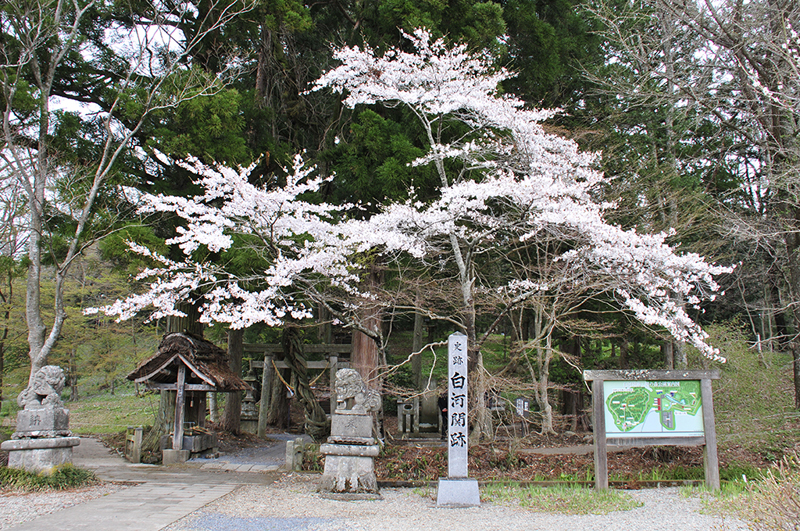
*Emishi is different from Ezochi, where the indigenous Ainu people lived, and refers to people living in an unknown land beyond the reach of the Imperial Court. Recent research has led to the growing theory that the people living in the Tohoku region at that time were not Ainu, but the Yamato people
Shirakawa Barrier: Its Role Ended During the Heian Period
The Imperial Court had been trying to bring the Emishi under its control for some time since before the Nara period, but in the early Heian period, this goal was almost achieved by Sakanoue no Tamuramaro, who was appointed Seii Taishogun (Great General of the Expedition to Subjugate the Emishi) and head of the Emishi Conquest. By that time, Shirakawa Barrier had also ceased to function
During the Kamakura period, the Yuki clan took control of Shirakawa
Shirakawa was given to Yuki Tomomitsu, who participated in Minamoto no Yoritomo's conquest of Oshu in 1198, and has been ruled by the Yuki clan (Shirakawa Yuki clan) for the past 400 years. The Yuki clan's castle was originally Shirakawa Castle, but during the Sengoku period it was moved to Komine Castle
The Yuki clan did not participate in the Odawara Campaign, the battle in which Toyotomi Hideyoshi annihilated the Hojo clan in 1590, and so that same year Hideyoshi stripped them of their positions and confiscated their territory (Oshu punishment), forcing them to leave Shirakawa
Shirakawa Domain, where Matsudaira Sadanobu served as lord
The Yuki clan was succeeded by Gamo Hideyuki, the lord of Aizu, and Shirakawa remained under Aizu territory even during the Edo period, but in 1627 it became the territory of Niwa Nagashige, and the Shirakawa Domain was established. Nagashige made Komine Castle his residence, and carried out extensive renovations and developed the area around the castle
The Shirakawa Domain saw a succession of successive lords. Sakakibara Tadatsugu succeeded the Niwa family for two generations, and was then succeeded by Honda Tadayoshi and Honda Tadahira, before Matsudaira Tadahiro entered Shirakawa in 1681. The Matsudaira family was a direct descendant of the Tokugawa family, and remained as lords of the domain for eight generations until 1823
In particular, Matsudaira Sadanobu, who became a senior councilor of the Tokugawa shogunate and carried out the Kansei Reforms, served as the domain's lord from 1783 to 1823. Sadanobu identified the site of the Shirakawa Barrier and constructed Nanko (Nanko Park), which is still popular today for its beautiful scenery. The Abe family succeeded the Matsudaira family, and the area was under the stewardship of the shogunate for around two years from 1867 until the restoration of imperial rule in 1869
The Shirakawa Barrier Site identified by Matsudaira Sadanobu
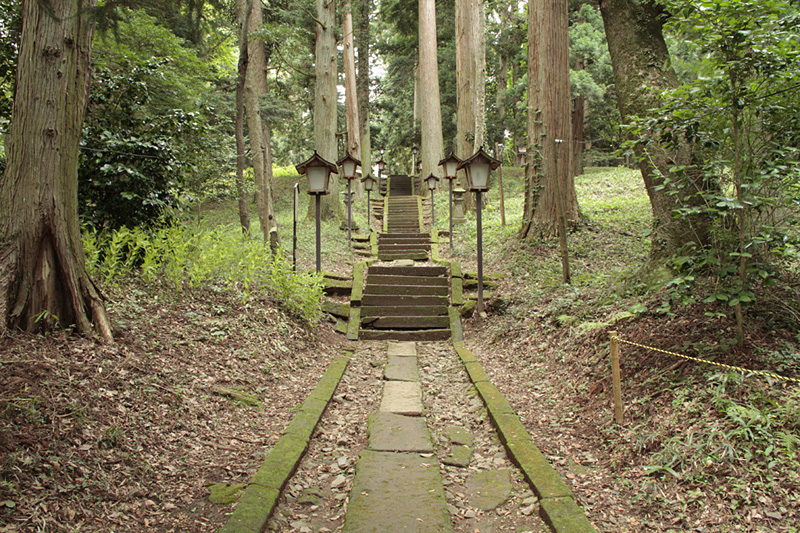
The Shirakawa Barrier Site is located in the mountains, about 3km from the Tochigi Prefecture border. Even after it ceased to function as a checkpoint, Shirakawa Barrier remained a place of longing for people living in the capital as the gateway to the unknown world of Oshu, known as Michinoku, and it appears in poetry as a well-known utamakura (famous place). The Edo period haiku poet Matsuo Basho also visited Shirakawa and reflected on the border checkpoint, writing in his book Oku no Hosomichi (The Narrow Road to the Deep North): "As the days of anxiety continued to pass, I came to Shirakawa Barrier and my mind was set on my journey."

Matsudaira Sadanobu investigated the location where the checkpoint is said to have been located, identified the location where the dry moat (a moat without water) and earthworks remain, and erected a monument marking the "ancient site." In addition to the "Ancient Site Monument," the Shirakawa Barrier Site is home to Shirakawa Shrine, the 800-year-old "Junior Second Rank Cedar" tree said to have been planted by the early Kamakura period poet Fujiwara Ietaka, and Shirakawa Barrier Forest Park, a free-to-enter park. The Shirakawa Barrier Site is a nationally designated historic site
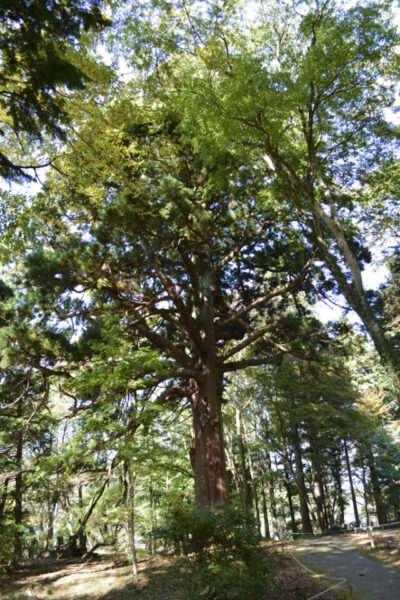
Shirakawa Barrier Site <Information>
- Facility name: Shirakawa Barrier Ruins
- Address: Hatayaki Sekinomori, Shirakawa City, Fukushima Prefecture
- Phone number: 0248-22-1147 (Shirakawa Tourism and Products Association)
- Facility name: Shirakawa Forest Park
- Address: 7-2 Hatayado Shirakawachi, Shirakawa City, Fukushima Prefecture
- Phone number: 0248-32-2921
- Opening hours: 9:00-17:00 (until 16:00 from November to March)
- Closed: 2nd Wednesday (or the following day if it falls on a public holiday), New Year's holidays
- Admission fee: Free
- URL: Go! See it! Shirakawa Shirakawa Pass
Google Maps
Shirakawa Castle, the residence of the Yuki clan, the first lord of Shirakawa
Shirakawa Castle is a mountain castle that is said to have been built around 1298 by Sukehiro, the grandson of Yuki Tomomitsu, whose first domain was Shirakawa. It is located on Mount Fujisawa, about 3km east of JR Shirakawa Station. It is also known as Karamejo Castle. In the early 1500s, after the war, Komine Castle was built, and the castle ceased to function as the main castle. No buildings remain at the Shirakawa Castle ruins, but there are moats, earthworks, and remains of a residence. It is a nationally designated historic site
Shirakawa Castle Ruins <Information>
- Facility name: Shirakawa Castle Ruins
- Address: Fujisawa, Shirakawa City, Fukushima Prefecture, etc
- Phone number: 0248-27-2310 (Shirakawa City Cultural Properties Division)
Google Maps
Komine Castle, the castle of the Shirakawa domain

Komine Castle was the castle that served as the residence of the Shirakawa Domain during the Edo period. It is said to have been built by Yuki Chikatomo around 1350. During the Edo period, the first lord of the Shirakawa Domain, Niwa Nagashige, made extensive renovations to the castle
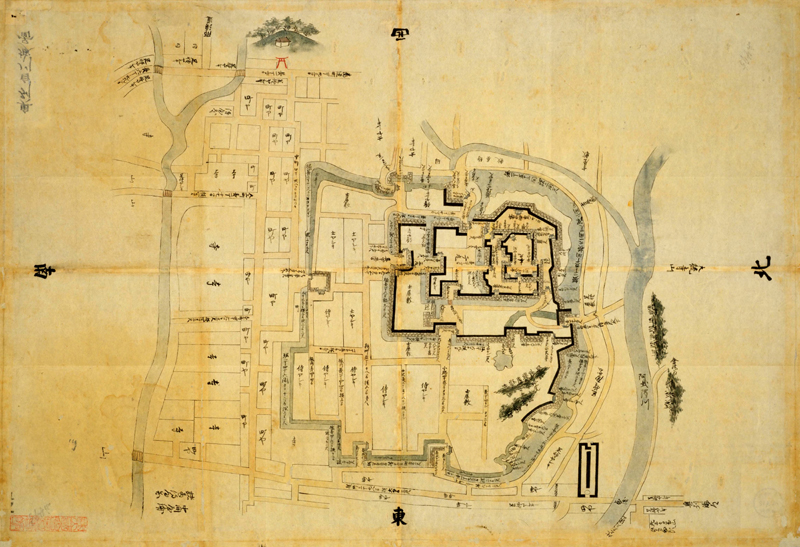
Komine Castle was attacked and fell to the new government during the Boshin War (1868-1869), which was the final resistance of the Edo Shogunate against the new government after the Meiji Restoration
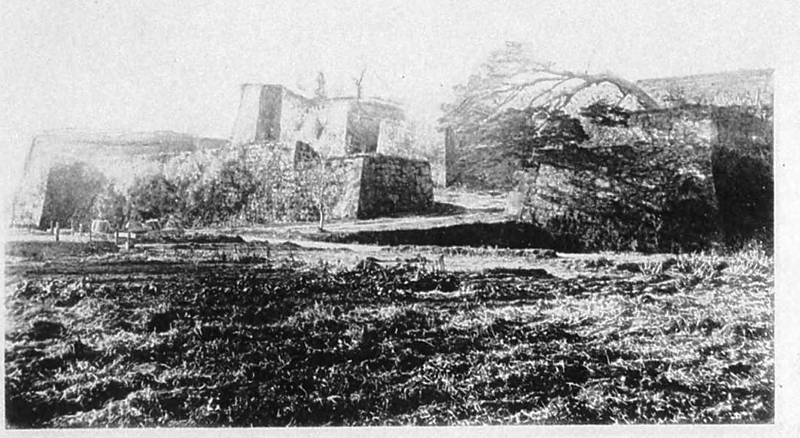
No buildings from that time remain at the Komine Castle Ruins. The only remains are the stone walls and parts of the moat, but since 1991 (Heisei 3), the three-story turret and front gate have been restored based on documents from that time. The Komine Castle Ruins are a national historic site
Komine Castle Ruins <Information>
- Facility name: Komine Castle Ruins
- Address: 1 Gurouchi, Shirakawa City, Fukushima Prefecture
- Phone number: 0248-22-1147 (Shirakawa Tourism and Products Association) *Open to the public except for the triple tower
- Facility name: Three-story turret
- Opening hours:
- April to October: 9:30 to 17:00
- November to March: 9:30 to 16:00
- Admission fee: Free
- Closed: Year-end and New Year holidays
- URL: Komine Castle Ruins, the gateway to Michinoku
Google Maps
Nanko, a park for the common people built by Matsudaira Sadanobu
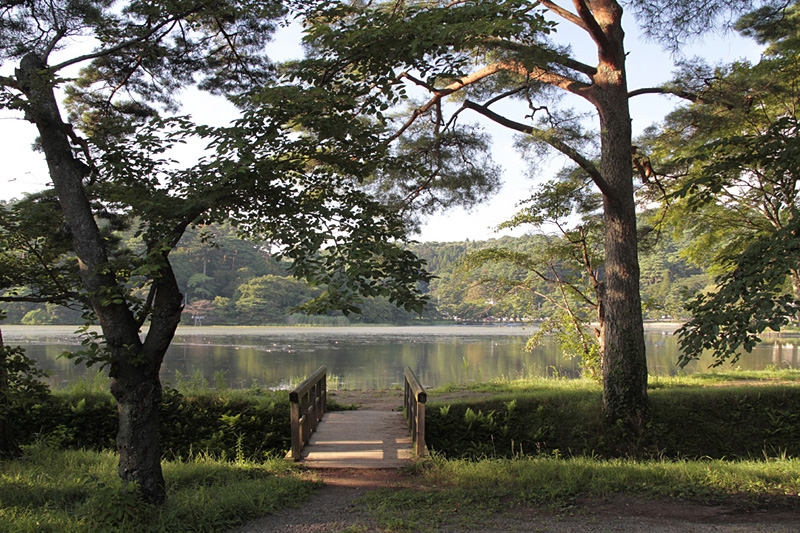
Nanko is a park built by Matsudaira Sadanobu in 1801. Sadanobu's philosophy was "enjoyment for the common man and the samurai," and he created a pond in what was originally a wetland, and developed gardens and walking paths, eliminating boundaries to create a park that anyone could enter. It is said to be Japan's first park, and the Kyorakutei teahouse (designated an important cultural property by Shirakawa City) within the park is a teahouse that was open to everyone regardless of social status
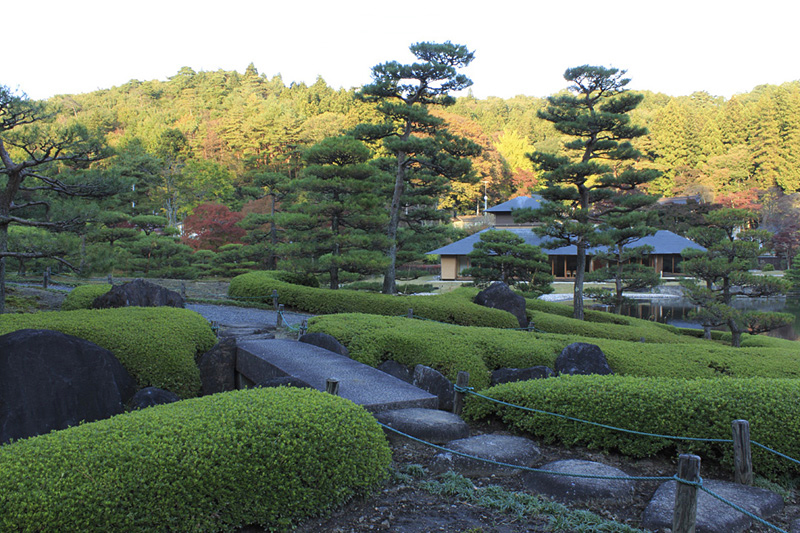
Nanko Lake has been developed by Shirakawa City as a public park called Nanko Park, and Suirakuen within the park is a beautiful Japanese garden with a strolling pond where you can enjoy tea and other activities
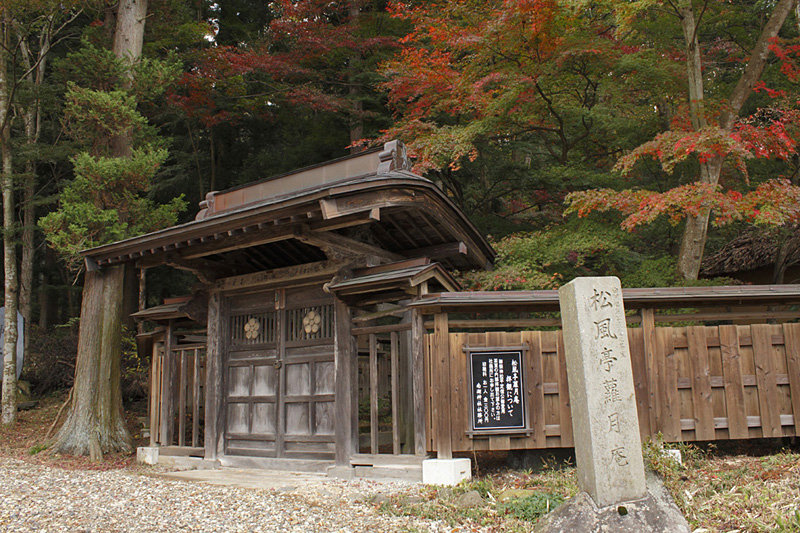
Nanko Shrine in Nanko Park is a shrine dedicated to Sadanobu and was built by Shibusawa Eiichi in 1922 (Taisho 11)
Nanko Park<Information>
- Facility name: Nanko Park
- Address: 1 Minamiko, Shirakawa City, Fukushima Prefecture
- Phone number: 0248-22-1147 (Shirakawa Tourism and Products Association) *Free to explore outside of Suirakuen
- Facility name: Suirakuen
- Address: Nanko Park
- Phone number: 0248-22-1147 (Shirakawa Tourism and Products Association)
- Opening hours:
- April to November: 9:00 to 17:00
- December to March: 9:00 to 16:30
- Closed days:
- April to June, August to November/Open every day
- March and July: 2nd Wednesday and Thursday (or the following day if a public holiday falls on that day)
- December to February: Second Wednesday (or the following day if Wednesday is a public holiday)
- New year holiday season
- Admission fee: Adults 350 yen, elementary, middle and high school students 170 yen
- URL: Walk around Nanko Park, a nationally designated historic site and scenic spot



![The place you should not come and the phantom checkpoint "Nakura no Seki" written in waka poetry [Fukushima Prefecture] 0438-016](https://jp.neft.asia/wp-content/uploads/2022/11/0438-016-150x150.jpg)
!["Negaseki" is one of the three ancient Oshu sekies that surpasses Minamoto Yoshitsune and Matsuo Basho [Tsuruoka City, Yamagata Prefecture] 3809167_m](https://jp.neft.asia/wp-content/uploads/2023/02/3809167_m-150x150.jpg)
![What is Shirakawa like? Tamatebako series, a trivia series that lets you understand the region, including history, tourist spots, and specialty items [Shirakawa City, Fukushima Prefecture] 25810197_m](https://jp.neft.asia/wp-content/uploads/2024/03/25810197_m-150x150.jpg)
![Yurihonjo City, where Honjo, Kameda and Yajima domains were intersected between the Kubota and Shonai domains [Akita Prefecture] FF2C8AAA4350E7E179F97F97B38B3A2302F-1](https://jp.neft.asia/wp-content/uploads/2024/04/ff2c8aaa4350e7e179f97f38b3a2302f-1-150x150.jpg)

![The Golden Legend of Mutsu Province | The Koganeyama Gold Mining Site in Wakuya Town, said to be Japan's first gold-producing region [Miyagi Prefecture] 32555826_m](https://jp.neft.asia/wp-content/uploads/2025/10/32555826_m-150x150.jpg)
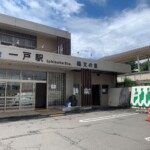
![Cold horses graze at the feet of Shiriyazaki Lighthouse, the northernmost point of Honshu [Higashidori Village, Aomori Prefecture] cold horse](https://jp.neft.asia/wp-content/uploads/2022/06/30924210_m-150x150.jpg)
